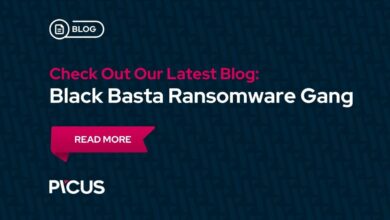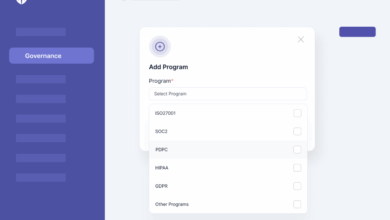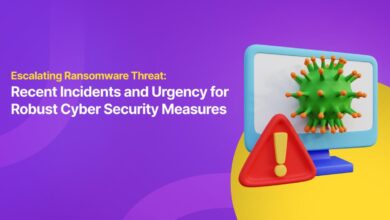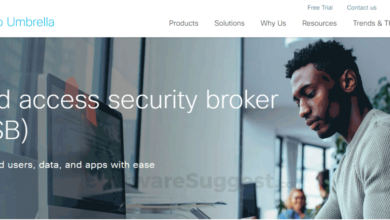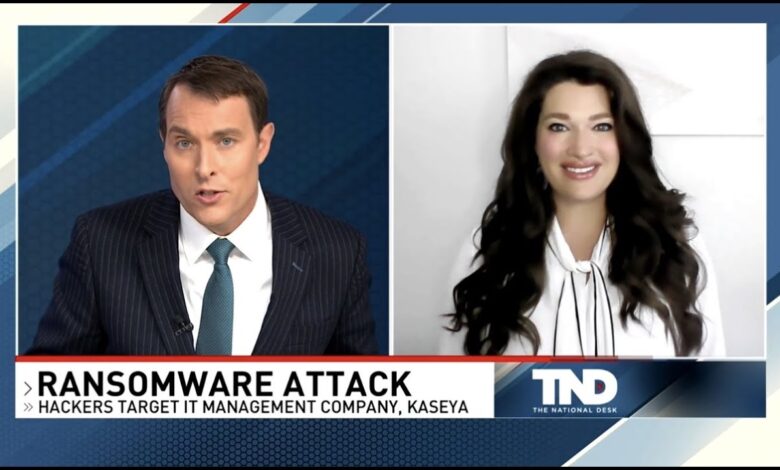
Ransomware Attack on US TV Broadcaster Sinclair
Ransomware attack on US TV broadcaster Sinclair: It sounds like a scene from a cyberpunk thriller, doesn’t it? But this wasn’t fiction. A major ransomware attack crippled Sinclair Broadcast Group, a significant player in American television, impacting numerous stations and leaving viewers in the dark. This post dives into the details of this high-profile cyberattack, exploring the vulnerabilities exploited, the attackers’ methods, the fallout, and the crucial lessons learned for the media industry and beyond.
We’ll examine Sinclair’s infrastructure, the type of data targeted, and the ripple effects felt across their network. We’ll also delve into the recovery process, exploring the steps Sinclair took to regain control, improve their security posture, and mitigate future risks. This incident serves as a stark reminder of the ever-present threat of ransomware and the importance of robust cybersecurity measures in today’s interconnected world.
Sinclair Broadcast Group and its Vulnerability
The ransomware attack on Sinclair Broadcast Group highlighted the vulnerabilities inherent in large, complex media organizations, particularly those reliant on aging infrastructure and potentially insufficient cybersecurity protocols. The incident serves as a cautionary tale for other media companies, demonstrating the devastating consequences of a successful cyberattack.Sinclair’s infrastructure, encompassing numerous local television stations across the United States, is inherently distributed and complex.
This geographically dispersed network, coupled with a likely mix of older and newer technologies, presents a significant challenge for unified security management. The sheer scale of the operation increases the attack surface, making it more difficult to identify and patch vulnerabilities across all systems. Furthermore, the integration of various systems—from news production and broadcast equipment to internal administrative networks and potentially cloud services—creates potential points of entry for malicious actors.
Sinclair’s Data and the Impact of Compromise
Sinclair likely stores a vast amount of sensitive data, including news content, financial records, employee information, viewer data, and potentially proprietary technologies related to broadcasting. The compromise of this data could have several significant consequences. The release of confidential financial information could harm Sinclair’s reputation and financial standing. The theft of employee data could lead to identity theft and legal repercussions.
The exposure of viewer data, including personal preferences and viewing habits, would violate privacy and potentially lead to legal action. Finally, the disruption of news operations due to the ransomware attack itself resulted in significant operational and reputational damage. The loss of broadcast capability, even temporarily, represents a considerable financial and public service impact.
Sinclair’s Security Protocols Compared to Industry Best Practices
While specific details about Sinclair’s pre-attack security protocols haven’t been publicly released, the success of the ransomware attack suggests potential deficiencies. Industry best practices for media organizations typically include robust multi-factor authentication, regular security audits and penetration testing, employee security awareness training, strong data encryption both in transit and at rest, and a comprehensive incident response plan. A lack of any of these, or their insufficient implementation, could have contributed to the vulnerability.
Comparing Sinclair’s situation to other large media companies who have faced similar attacks reveals a pattern: a lack of proactive security measures often leads to significant damage. For example, the lack of air-gapped backups in some scenarios has exacerbated the impact of ransomware attacks. This is a critical aspect of disaster recovery planning that should have been in place.
The Sinclair Broadcast Group ransomware attack really highlighted the vulnerability of even major media outlets. Thinking about robust, secure systems, it made me wonder about the future of development, especially with platforms like those discussed in this article on domino app dev the low code and pro code future , and how they might help prevent similar incidents.
Ultimately, Sinclair’s experience underscores the need for constantly evolving security measures in today’s digital landscape.
Sinclair’s Response to the Ransomware Attack
Following the attack, Sinclair’s response likely involved several key steps. These steps may include immediate containment of the attack to prevent further spread, identifying the extent of the data breach, engaging with cybersecurity experts to investigate and remediate the issue, and potentially negotiating with the ransomware attackers (although this is a highly debated practice with significant ethical and legal considerations).
The timeline of these actions, and their effectiveness, would determine the overall impact and recovery time. It is important to note that a prompt and well-executed incident response plan is critical in minimizing the long-term consequences of a ransomware attack. The speed and efficacy of their response would have directly impacted the amount of data lost or compromised and the duration of service disruption.
The Ransomware Attack
The ransomware attack on Sinclair Broadcast Group in 2023 serves as a stark reminder of the vulnerability of even large media organizations to sophisticated cyber threats. While the specific ransomware used wasn’t publicly disclosed by Sinclair, the incident highlighted the significant impact such attacks can have on critical infrastructure and daily operations. The lack of transparency surrounding the details of the attack makes a comprehensive analysis challenging, but based on available reporting, we can piece together a picture of the methods and impact.
Ransomware Used and Capabilities
The precise type of ransomware deployed against Sinclair remains undisclosed. However, given the scale and nature of the disruption, it’s likely the attackers employed a highly capable variant, possibly a custom-built strain or a sophisticated commercially available ransomware-as-a-service (RaaS) offering advanced encryption techniques and data exfiltration capabilities. These capabilities would have allowed the attackers to encrypt critical files, disrupting broadcasting operations, and potentially steal sensitive data for further leverage.
The lack of public information prevents a more specific identification of the ransomware family.
Initial Access Methods, Ransomware attack on us tv broadcaster sinclair
The method used by the attackers to gain initial access to Sinclair’s systems is also unknown. Common vectors for ransomware attacks include phishing emails containing malicious attachments or links, exploiting known vulnerabilities in software, or leveraging compromised credentials obtained through other means. The attackers might have used a combination of techniques to bypass security measures and gain a foothold within Sinclair’s network.
A thorough internal investigation would be necessary to pinpoint the exact entry point.
Extent of Data Encryption and Disruption
Reports indicate widespread disruption to Sinclair’s broadcasting operations, suggesting significant data encryption. The attack likely affected various systems, including those responsible for content management, scheduling, playout, and potentially even internal communications. The extent of data exfiltration—whether sensitive internal documents or viewer data were stolen—remains unclear. The disruption caused significant operational challenges, requiring Sinclair to implement contingency plans and potentially delaying or interrupting programming.
Affected Stations and Services
Precise details regarding which specific Sinclair stations were affected and the duration of the disruptions were not consistently reported across news outlets. The impact varied across different stations and services. Some experienced brief interruptions, while others faced more prolonged outages. The lack of transparency from Sinclair hinders a complete picture of the affected infrastructure.
| Affected Station | Service Disruption | Data Compromised | Restoration Time |
|---|---|---|---|
| (Unspecified Stations) | Broadcast Interruptions, Internal System Outages | Unknown, potentially internal systems and data | Variable, ranging from hours to days |
The Attackers
The ransomware attack on Sinclair Broadcast Group raises crucial questions about the perpetrators. Uncovering their identity and motives is key to understanding the attack’s scope and preventing future incidents. While the specifics remain shrouded in secrecy, analyzing the attack’s technical aspects and comparing it to similar incidents can help us build a hypothetical profile of the individuals or group responsible.The sophistication of the attack suggests a level of technical expertise beyond the capabilities of typical opportunistic ransomware actors.
The attackers likely possessed advanced knowledge of network infrastructure, security protocols, and the specific vulnerabilities within Sinclair’s systems. Their ability to successfully deploy and execute the ransomware, potentially evading detection for a period of time, points to a well-planned and coordinated operation. The operational method likely involved phishing, exploiting zero-day vulnerabilities, or leveraging compromised credentials to gain initial access to the network.
Attacker Demands and Ransom Amount
The exact ransom demand made by the attackers in the Sinclair Broadcast Group case remains undisclosed publicly. However, based on similar attacks against media organizations, the demand likely involved a substantial sum of money, potentially in cryptocurrency to maintain anonymity. The ransom amount would be influenced by the extent of data compromised, the potential for reputational damage to Sinclair, and the attackers’ assessment of Sinclair’s willingness to pay.
The lack of public information regarding the ransom amount underscores the sensitive nature of these negotiations and the attackers’ efforts to maintain secrecy.
Comparison to Similar Attacks
This attack shares similarities with other ransomware attacks targeting media companies. News organizations are attractive targets due to the time-sensitive nature of their operations and the potential for significant financial and reputational damage from data breaches and operational disruptions. Attacks on other media organizations often involve data encryption, demands for substantial ransoms, and the threat of data leaks if the ransom isn’t paid.
The attackers frequently exploit vulnerabilities in legacy systems or employee negligence to gain access. Examples include attacks on smaller news outlets that resulted in disruptions to their online publishing and broadcasting capabilities. The scale of the Sinclair attack, however, suggests a more significant resource commitment and a potentially larger ransom demand compared to attacks on smaller organizations.
Hypothetical Attacker Profile
Based on the available information, a hypothetical profile of the attackers might include: a financially motivated group with advanced technical skills and experience in network penetration and exploitation; familiarity with the media industry and the potential impact of data breaches on news organizations; a sophisticated operational structure capable of planning and executing a complex attack; and a high degree of operational security to avoid detection and attribution.
This profile aligns with several well-known ransomware groups known for targeting large organizations and demanding significant ransoms. Their anonymity and the use of cryptocurrency complicate efforts to identify and prosecute them, highlighting the persistent challenge posed by these sophisticated cybercriminal enterprises.
Recovery and Mitigation Strategies
Sinclair Broadcast Group’s ransomware attack highlighted the critical need for robust recovery and mitigation strategies in the media industry. Their response, while undoubtedly challenging, offers valuable lessons for other organizations facing similar threats. A swift and comprehensive approach is crucial to minimize disruption and prevent long-term damage.
Sinclair’s recovery process likely involved a multi-phased approach. First, they would have isolated affected systems to prevent further spread of the ransomware. This would involve disconnecting infected machines from the network. Next, they would have engaged forensic experts to analyze the attack, identify the source, and determine the extent of data compromise. Data restoration would have been a key step, potentially involving restoring data from backups.
If backups were compromised, more sophisticated recovery techniques, such as data carving or file recovery from snapshots, may have been necessary. Finally, system rebuilding involved reinstalling operating systems, applications, and configurations on cleaned and secured hardware. This process would have been meticulously documented and tested to ensure data integrity and system stability before bringing systems back online.
Sinclair’s Enhanced Security Measures
Following the attack, Sinclair implemented several measures to prevent future incidents. These likely included strengthening their network security infrastructure, deploying advanced endpoint detection and response (EDR) solutions to monitor system activity and detect malicious behavior in real-time, and implementing multi-factor authentication (MFA) across all systems to enhance access control. They also likely invested in more robust backup and recovery solutions, ensuring regular offsite backups and testing their recovery procedures.
Furthermore, employee training programs focusing on cybersecurity awareness and best practices would have been a crucial component of their response. This includes training on recognizing phishing attempts and avoiding malicious links and attachments.
Best Practices for Media Organizations
Preventing ransomware attacks requires a proactive and multi-layered approach. The following best practices are crucial for media organizations:
A comprehensive security strategy is essential for mitigating the risk of ransomware attacks. Regular security assessments, vulnerability scanning, and penetration testing are vital for identifying and addressing weaknesses in an organization’s security posture.
- Implement robust and regularly tested backup and recovery solutions, storing backups offline or in geographically separate locations.
- Employ multi-factor authentication (MFA) for all user accounts, significantly reducing the risk of unauthorized access.
- Deploy advanced endpoint detection and response (EDR) solutions to monitor system activity and detect malicious behavior in real-time.
- Regularly update software and operating systems to patch known vulnerabilities. This includes both application software and the underlying operating systems.
- Educate employees on cybersecurity best practices, including phishing awareness and safe browsing habits. Regular training sessions are vital to keep employees updated on the latest threats.
- Segment networks to limit the impact of a breach, preventing ransomware from spreading to other parts of the organization.
- Develop and regularly test incident response plans to ensure a coordinated and effective response in the event of an attack. These plans should Artikel clear roles and responsibilities for all personnel involved.
- Consider cyber insurance to mitigate financial losses in the event of a successful attack. Insurance policies can provide crucial financial support during recovery.
Sinclair’s Response as a Case Study
Sinclair’s experience serves as a valuable case study for other organizations. Their response demonstrates the importance of a swift and coordinated response, involving forensic analysis, data recovery, system rebuilding, and enhanced security measures. The incident highlights the need for comprehensive cybersecurity strategies that encompass employee training, robust security protocols, and reliable backup and recovery mechanisms. By learning from Sinclair’s experience, other organizations can proactively strengthen their defenses and minimize the impact of potential ransomware attacks.
The financial and reputational damage from such an attack can be substantial, making a proactive approach critical.
Legal and Regulatory Implications
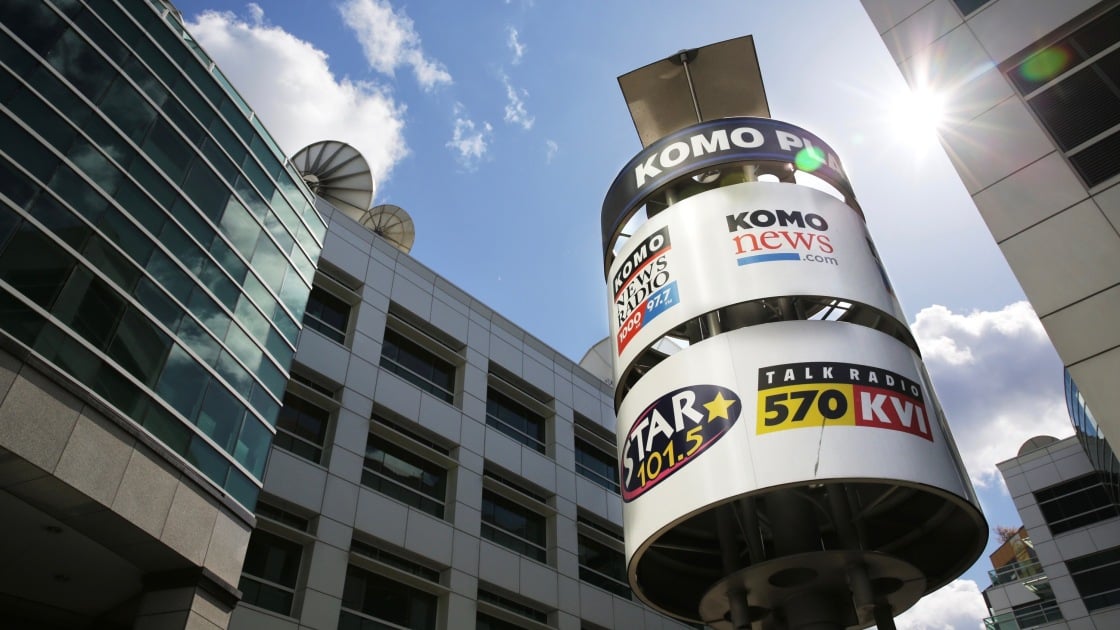
The Sinclair Broadcast Group ransomware attack triggered a cascade of legal and regulatory ramifications, highlighting the significant consequences organizations face when cybersecurity lapses lead to data breaches. The incident forced Sinclair to navigate complex legal landscapes, impacting not only its financial stability but also its reputation and relationships with customers and stakeholders.The potential legal liabilities for Sinclair were substantial and multifaceted.
The company faced potential lawsuits from affected individuals whose personal data was compromised, particularly if the breach resulted in identity theft or financial losses. Furthermore, Sinclair had to grapple with regulatory scrutiny from various government agencies, including the Federal Communications Commission (FCC), which regulates broadcasting, and the Federal Trade Commission (FTC), which enforces consumer protection laws related to data security.
Failure to comply with relevant regulations, such as those mandated by the California Consumer Privacy Act (CCPA) or other state-level data privacy laws, could have resulted in hefty fines and further legal action.
Data Breach and Customer Privacy Liabilities
Sinclair’s legal exposure stemmed from its obligations under various data privacy laws to protect customer data. These laws mandate specific security measures to prevent data breaches and require notification to affected individuals in the event of a breach. Failure to meet these obligations could result in class-action lawsuits from customers alleging negligence and seeking compensation for damages resulting from the breach.
The potential cost of these lawsuits, combined with the expenses associated with notification, credit monitoring services, and other remediation efforts, could significantly impact Sinclair’s bottom line. For example, Equifax’s 2017 data breach resulted in billions of dollars in fines, settlements, and legal fees, illustrating the potential financial consequences of inadequate data security practices.
Law Enforcement Investigation and Prosecution of Attackers
Law enforcement agencies, likely including the FBI, played a crucial role in investigating the ransomware attack against Sinclair. Their investigation would have focused on identifying the perpetrators, tracing the source of the attack, and gathering evidence to support potential criminal prosecutions. This involves digital forensics to analyze the ransomware, network logs, and other digital artifacts to understand the attack’s methods and scope.
The FBI’s involvement is critical in not only holding the attackers accountable but also in gathering intelligence to prevent future attacks and improve overall cybersecurity practices. Successful prosecution, however, depends on various factors, including the complexity of the attack, the ability to identify and locate the attackers, and the jurisdiction involved. The investigation might involve international cooperation if the attackers were based outside the US.
While attributing ransomware attacks to specific actors can be challenging, successful prosecutions can serve as a strong deterrent against future attacks.
Long-Term Impacts and Lessons Learned

The ransomware attack on Sinclair Broadcast Group, while seemingly contained in the short term, left a lingering impact on its operations and reputation. The full extent of the long-term consequences may not be immediately apparent, but certain areas of concern are already evident, affecting everything from financial stability to public trust. Understanding these impacts is crucial for Sinclair and other media organizations to bolster their cybersecurity defenses.The attack forced Sinclair to dedicate significant resources to recovery and remediation.
This included not only the direct costs associated with paying the ransom (if indeed one was paid – Sinclair has remained tight-lipped on this detail), but also the expenses incurred in restoring systems, hiring cybersecurity experts, and implementing new security protocols. These unforeseen expenses likely impacted their bottom line, potentially affecting shareholder value and investment decisions. Beyond the immediate financial hit, the disruption to broadcasting operations, even if temporary, damaged their reputation.
Loss of viewer confidence, even for a short period, can translate to decreased advertising revenue and a decline in audience share.
Sinclair’s Public Statements and Actions
Sinclair’s official statements regarding the attack have been carefully worded, avoiding specifics about the extent of the damage or the methods used by the attackers. This cautious approach is understandable from a legal and reputational standpoint. However, this lack of transparency has also fueled speculation and concerns among the public and industry analysts. The company has primarily focused on statements emphasizing their commitment to restoring services and enhancing their cybersecurity posture.
They’ve likely stressed their dedication to preventing future incidents, highlighting new security investments and training programs. However, without a more detailed public accounting of the incident and its consequences, the lingering uncertainty continues to impact public perception.
Visual Representation of Key Lessons Learned
A compelling visual representation of the lessons learned could take the form of a concentric circle diagram. The central circle would depict the initial vulnerability – perhaps a symbol representing a weak link in their security chain. The next concentric circle outwards would illustrate the immediate impact of the attack, showing disruptions to broadcasting and internal operations, symbolized perhaps by broken links or disrupted communication networks.
The following circle would represent the recovery phase, showcasing the steps taken to restore systems and implement mitigation strategies (represented by strong links and security shields). Finally, the outermost circle would encompass the long-term impacts and lessons learned, including strengthened security protocols, increased employee training, and improved incident response plans. Each circle would be color-coded, with the innermost circle using a darker, warning color to gradually transition to brighter, more positive colors as the diagram moves outwards, symbolizing the progression from crisis to recovery and improved resilience.
This visual effectively communicates the cascading effects of the attack and the comprehensive nature of the response and subsequent improvements.
Outcome Summary: Ransomware Attack On Us Tv Broadcaster Sinclair
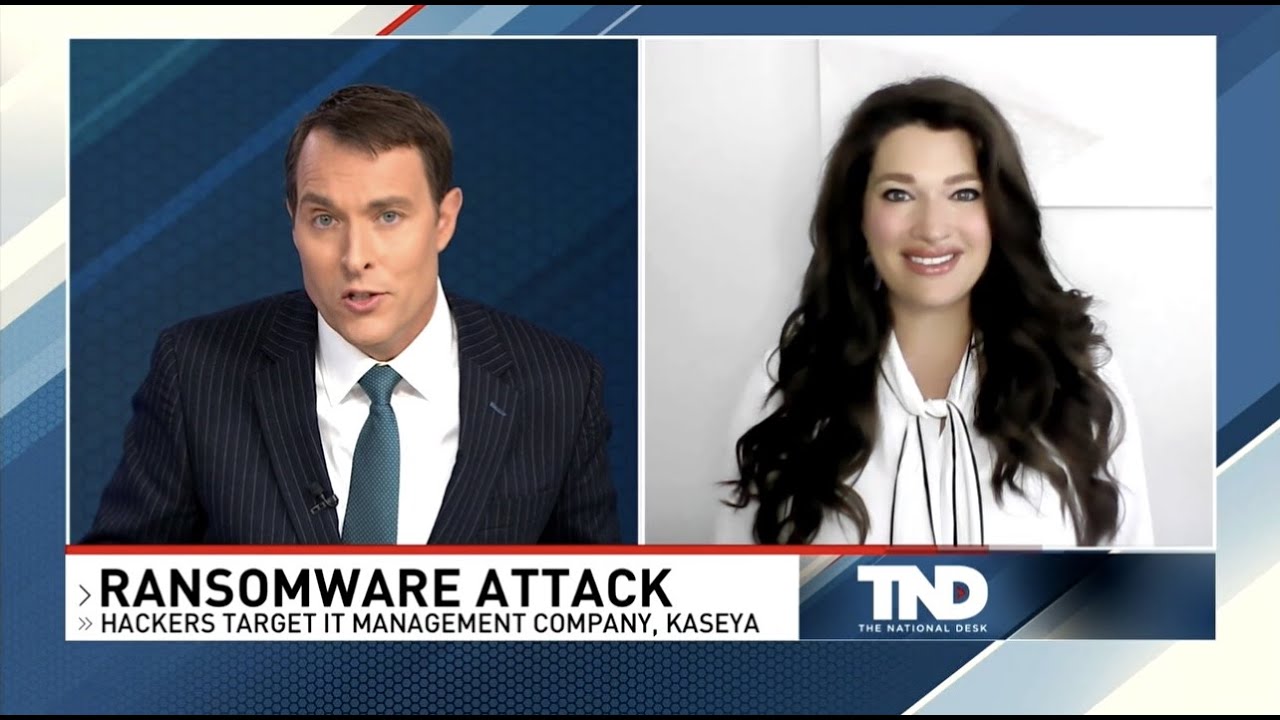
The Sinclair Broadcast Group ransomware attack stands as a cautionary tale for organizations of all sizes, emphasizing the critical need for proactive cybersecurity strategies. From identifying vulnerabilities in infrastructure to implementing robust data backup and recovery plans, the lessons learned from this incident are invaluable. While the immediate disruption caused significant inconvenience and potential financial losses, the long-term impacts extend to reputation and public trust.
The industry’s response, and Sinclair’s own recovery efforts, highlight the importance of collaboration and a commitment to continuous improvement in the face of evolving cyber threats. The story underscores that even well-established companies are not immune to the devastating effects of sophisticated cyberattacks.
Popular Questions
Did Sinclair pay the ransom?
Whether Sinclair paid the ransom hasn’t been publicly confirmed. Many organizations choose not to disclose this information due to security and legal concerns.
What type of ransomware was used?
The specific type of ransomware used in the attack often isn’t revealed publicly to prevent further attacks using similar methods. Investigations often take time to determine this information.
What long-term effects did this have on Sinclair’s business?
Long-term effects could include decreased viewer trust, increased security costs, and potential legal ramifications related to data breaches. The full extent of the long-term impact might not be apparent for some time.
Were any employee credentials compromised?
This detail is usually not made public immediately following an attack as part of the ongoing investigation and security measures. The full extent of the compromise would be determined during the forensic analysis.
